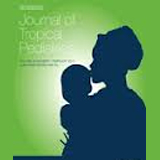
Introduction: There is wide variation in the feeding practices of extreme low birth weight (ELBW) preterms often guided by tradition and resources. The feeding regimen at Groote Schuur Hospital (GSH) nursery, a tertiary neonatal unit, follows a restricted use of parenteral nutrition and concentrates on early introduction of breast milk. There is a need to determine whether this approach achieves acceptable growth velocity. Objectives: This study aims to describe the growth velocity of ELBW babies at GSH. Design: This was a retrospective cohort study. Methodology: Infant hospital records of all ELBW babies born at GSH from 1 March to 31 August 2010 were accessed from a previously collected database and relevant data extracted. Growth data were collected from birth to 8 weeks postnatal age or discharge, whichever came first. Results: Ninety-one ELBW babies were born during the study period. Forty were excluded from the study. Thirty died before discharge, and 10 were excluded for other reasons. The mean (SD) gestation of the cohort was 28.5 (1.6) weeks, and the median (range) birth weight was 875 (640–995) g. The overall mean (SD) growth velocity was 14 (2.9) g/kg/day. There was no statistically significant association between the growth velocity and the type of feed given, days to establishing full enteral feeds, time to regaining birth weight, HIV exposure status, intra-uterine growth restriction or exposure to antenatal steroids. Conclusion: In our cohort of ELBW infants, growth velocity was within the range currently deemed acceptable by international consensus.